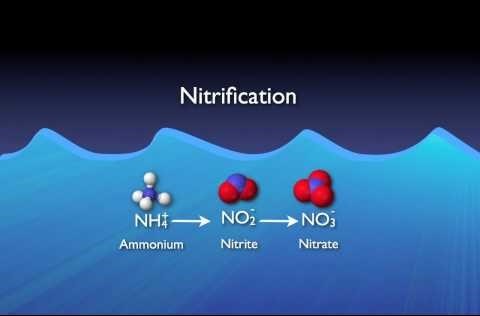Case Study | Nitrification Optimization
in Biological Wastewater Treatment System
The removal of ammonium (NH4+) from wastewater is an essential step in the removal of nutrients from industrial wastewater and municipal sewage in order to avoid eutrophication of surface waters. The process of ammonium removal involves two steps, respectively nitrification and denitrification.
Nitrification is the biological oxidation of ammonia or ammonium to nitrite followed by the oxidation of the nitrite to nitrate. The transformation of ammonia to nitrite is usually the rate limiting step of nitrification. Nitrification is an important step in the nitrogen cycle in soil and water. Nitrification is an aerobic process performed by small groups of autotrophic bacteria and archaea. This process was discovered by the Russian microbiologist Sergei Winogradsky.
Nitrifying micro organisms are relatively slow growing and can be affected by adverse pH or temperature along with organic or inorganic toxicity associated with industrial discharges. Once lost from the system, these microbes are relatively slow to return naturally due to their relatively slow growth rate.

Denitrification is a microbially facilitated process where nitrate is reduced and ultimately produces molecular nitrogen (N2). Facultative anaerobic bacteria perform denitrification as a type of respiration that reduces oxidized forms of nitrogen in response to the oxidation of an electron donor such as organic matter (BOD).
Nitrification in Municipal & Industrial Wastewater Treatment
White Paper: Nitrification in wastewater treatment plants
The removal of nitrogen from wastewaters is possible in many different forms of biological wastewater treatment plant setup’s. From activated sludge systems, fixed bed systems, biorotors, trickling filters they all adhere to more or less the same operational conditions. Read this white paper for more on these conditions.
Case study Nitrification reactivation at landfill treatment plant
This case study describes who bioaugmentation can revive nitrification capacity in a heavy loaded landfill leachate treatment plant.
Case study Nitrification restoration in municipal wwtp
This case study describes how bioaugmentation restores nitrification after an extreme cold weather period in a municipal wwtp receiving also landfill leachate and high ammonium loaded digester supernatant.
Case study Nitrification improvement coke manufacturing wwtp
This case study describes how bioaugmentation reduces inhibition of the nitrification that occurs due to the presence of difficult-to-biodegrade organics in the influent.
Case study Nitrogen reduction in effluent of cheese factory
This case study describes how a food industrial wastewater treatment plant reduces total nitrogen levels in their effluent by using bioaugmentation.